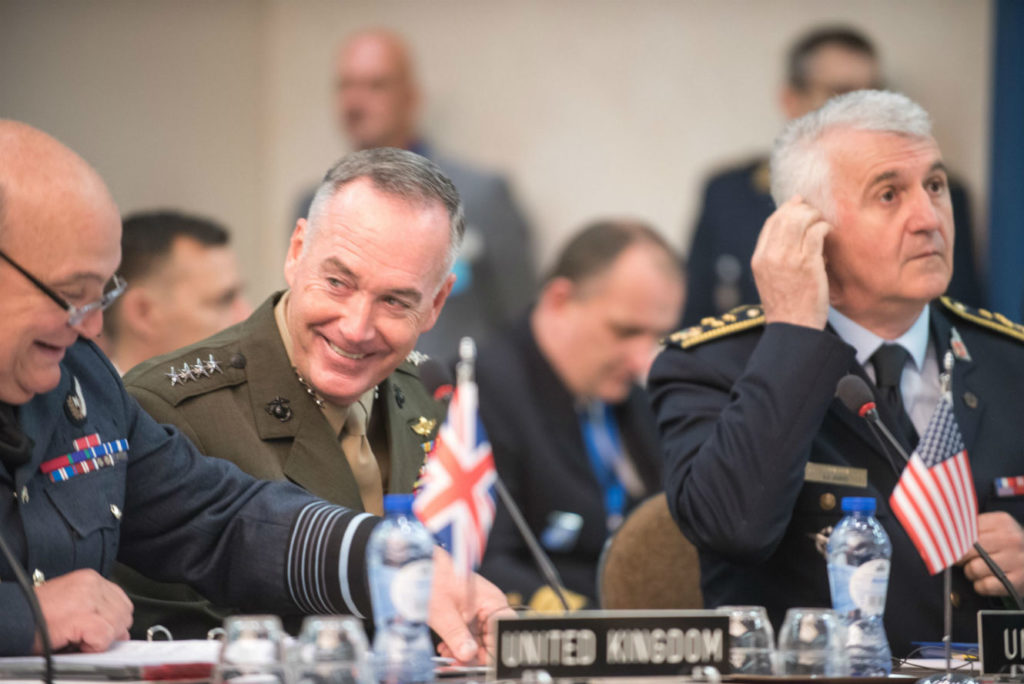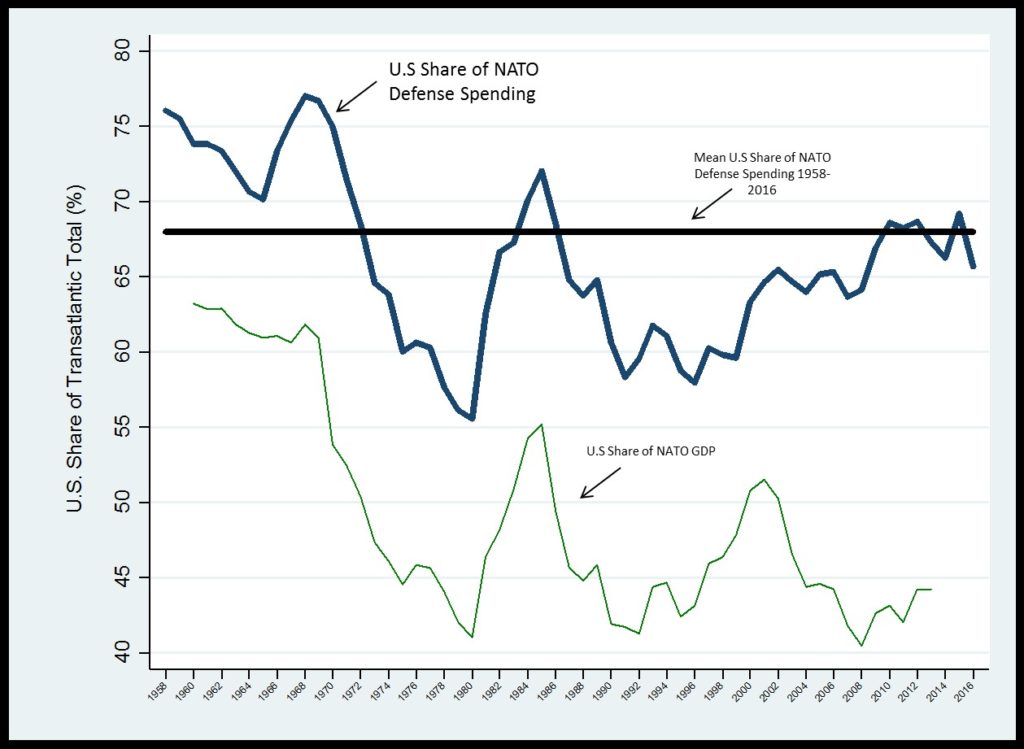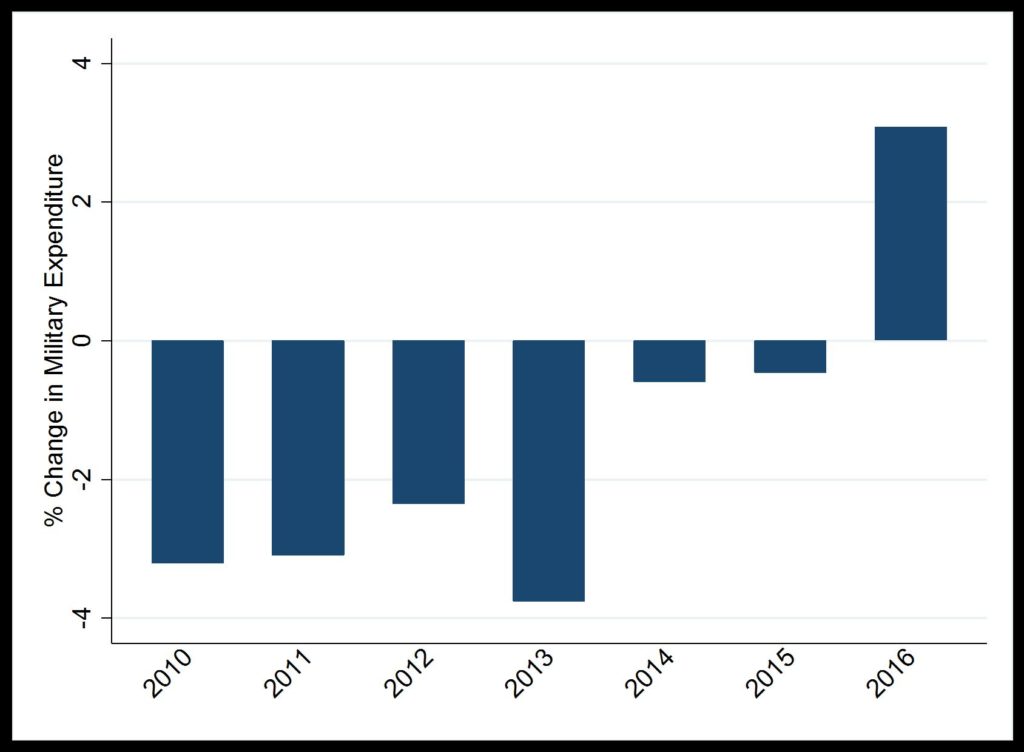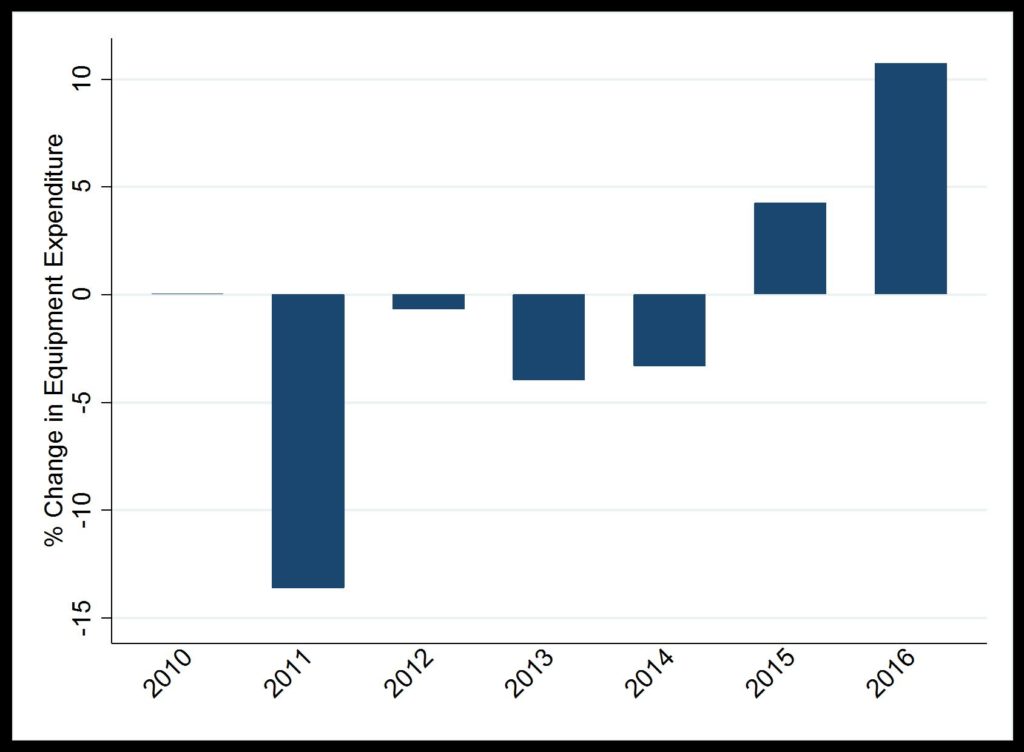Clearing the Air on Transatlantic Burden-Sharing, Part 1: What’s Going On Here?

Transatlantic burden-sharing is atop the agenda for today’s meeting of NATO leaders. And for good reason. War on the Rocks contributors have reminded us how challenging it is to deter adversaries without inviting free-riding, and of the long history and mixed results of “hectoring” allies. Emotions run high, and the word “crisis” appears frequently.
In a series of three brief articles, I will take a step back and clear the analytical underbrush a bit, because it becomes hard at times to understand what we are actually talking about. In this first installment, I attempt to offer a bit of historical perspective on the burden-sharing issue, in both quantitative and narrative form. In a second, I will lay out some philosophical and theoretical perspectives on what the fundamentals of the issue are. In a third and final article, I will take an empirical look at the theoretical perspectives, asking about causes and effects: what allies actually do, why, and under what circumstances.
So let’s get to the history: While NATO has gone through at least three eras, during which strategic environments, adversaries, and the configuration of the alliance itself have changed, the burden-sharing issue has been central throughout. What Harland Cleveland first referred to as a “transatlantic bargain” has offered continued U.S. commitment to European security, to include extended nuclear deterrence, in exchange for European allies’ commitment to organize, train, and equip their forces for internal stability and collective defense. Allies are expected to accomplish these tasks in accordance with what NATO defense planners call “fair burden-sharing and reasonable challenge,” which are the two principles by which capabilities targets are assigned during the NATO Defense Planning Process. When allies have failed to fully live up to this standard, U.S. leaders have been direct. President John F. Kennedy told his National Security Council in 1963 that “we cannot continue to pay for the military protection of Europe while the NATO states are not paying for their fair share and living off the ‘fat of the land.’” More recently, then-Secretary of Defense Robert Gates warned of a “dim if not dismal” future for the alliance if unequal burden-sharing persisted. President Barack Obama lamented “free riders” in an April 2016 interview with Jeffrey Goldberg of The Atlantic.
This sense of history repeating itself should give us pause in declaring an alliance in crisis or in identifying watershed historical moments. Looking at the historical evolution of NATO member defense budgets should have a similar effect (see Figure 1 below). Moreover, while we sometimes think of “free-riding” in moral terms, the earliest and most influential economic study of transatlantic burden sharing reminded readers that “the large share of alliance burdens that falls upon the United States should not be explained in strictly moral or political terms.”

Note that the imbalance is not close to what it was in the early Cold War, the Vietnam War, or even the early 1980s. The increasing imbalance in the early 2000s coincides with increased U.S. military engagement worldwide following the 9/11 terrorist attacks. U.S. defense spending choices have reflected U.S. interests and priorities as perceived by U.S. decision-makers. These interests and priorities often differ across the Atlantic.
Because of concern about the developing imbalance in the early 2000s, NATO defense ministers committed in 2006 to working toward spending 2 percent of GDP on defense. By 2014, however, that commitment did not appear to be having much effect. Accordingly, at the Wales Summit in September 2014, allied heads of state and government agreed, for the first time at that senior-most level, and in public, a pledge on defense investment. The pledge commits the allies immediately to halt declines in defense spending and “aim to move towards” spending 2 percent of GDP on defense “within a decade,” and 20 percent of defense budgets on equipment modernization. The path the allies have followed since Wales indicates that the pledge may be having its desired effect: two years into the ten-year program, NATO member defense spending may have “turned a corner.”
As the solid blue line in Figure 1 demonstrates, the U.S. share of total NATO defense spending has declined below its long-term average over the last two years. Figures 2 and 3 below demonstrate that this shift is largely attributable to changes in allies’ behavior: Taking the United States off the table for the moment, the other NATO member states increased military spending by 3.6 percent (about $9.3 billion) in 2016 and they increased equipment spending by over 10 percent. This shift suggests that rather than being the cause of burden-sharing problems, NATO can be a central part of the solution.


There is more reason to believe the pledge might be working. While in 2014, only three allies met the 2 percent guideline, five did two years later. In 2014, eight allies met the 20 percent guideline on equipment modernization. Two years later, it was ten allies. Of those NATO members not meeting the 2 percent guideline in 2016, 19 halted or reversed declines in real terms. Among those 19, 14 increased defense spending enough to move toward 2 percent of GDP. Six NATO member states (Latvia, Lithuania, Romania plan to spend 2 percent of GDP on defense in the next two years; Estonia, Poland, and the United Kingdom already spend 2 percent of GDP on defense ) have incorporated, publicly and precisely, the quantitative guidelines of the Wales Pledge into their national defense and fiscal planning: their national planning documents make specific reference to defense spending moving toward 2 percent of GDP. A further ten (Belgium, Bulgaria, the Czech Republic, Denmark, France, Germany, Hungary, Italy, Norway, and Slovakia) have done so with less precision or sufficiency.
These developments are a necessary but likely insufficient condition for achieving the aims of the Wales Pledge. Why might this be occurring? What might make this period of focus on transatlantic defense spending different from the others? I will explore those questions in the next installment.
Jordan Becker is a Defense Policy Advisor at the United States Mission to NATO. This article reflects his views alone, and does not represent those of any part of the U.S. government.

